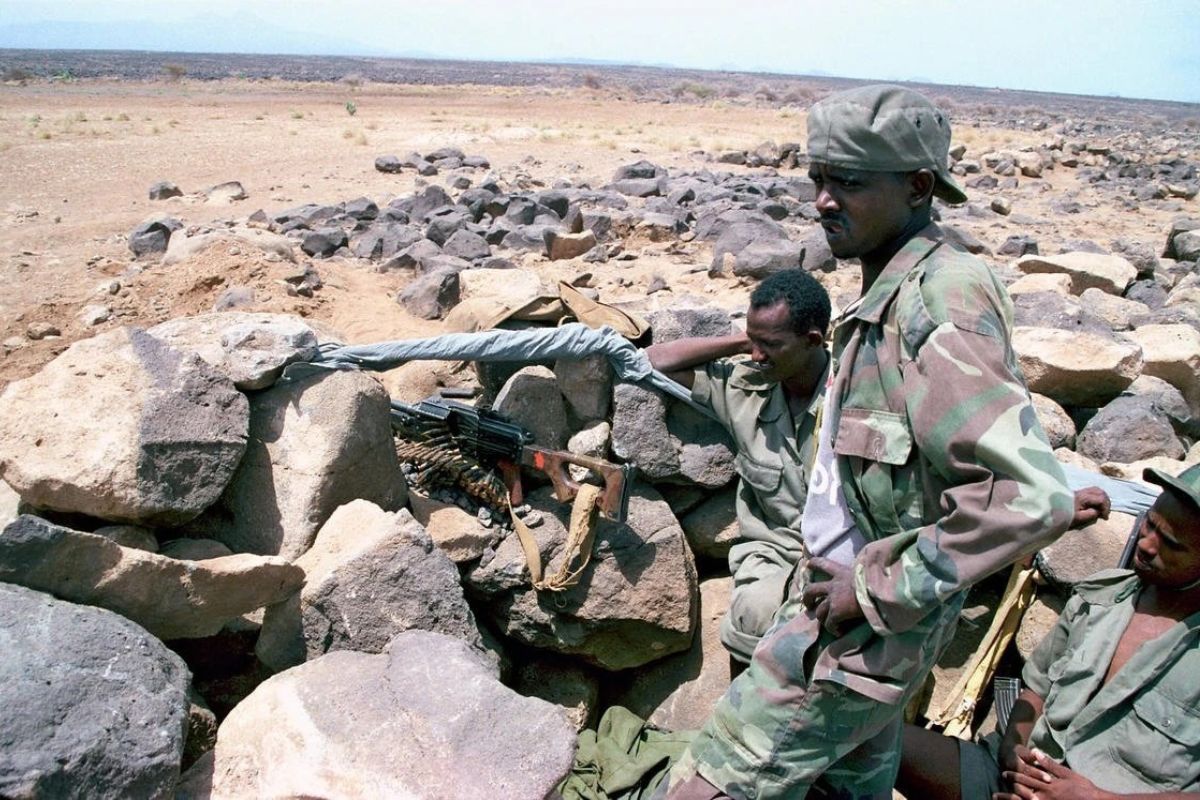
The Second Eritrean Civil War is a significant chapter in Eritrea's history, marked by intense conflict and political upheaval. This war, which erupted in the late 1990s, involved various factions vying for control and influence within the country. Understanding this conflict requires delving into its causes, key events, and lasting impacts on Eritrea and its people. From the role of external actors to the internal power struggles, this war reshaped the nation's political landscape. Why did the Second Eritrean Civil War happen, and what were its consequences? Let's explore 25 compelling facts that shed light on this turbulent period in Eritrea's history.
Key Takeaways:
- The Second Eritrean Civil War, fought from 1980 to 1981, shaped Eritrea's struggle for independence. It led to the dominance of the EPLF and paved the way for Eritrea's independence in 1993.
- The war had severe humanitarian consequences, including displacement, famine, and human rights abuses. Understanding this conflict helps us appreciate the resilience of the Eritrean people in rebuilding their nation.
Background of the Second Eritrean Civil War
The Second Eritrean Civil War was a significant conflict that shaped the nation's history. Understanding the key facts about this war provides insight into its causes, events, and consequences.
- The Second Eritrean Civil War began in 1980 and lasted until 1981.
- It was primarily a conflict between the Eritrean Liberation Front (ELF) and the Eritrean People's Liberation Front (EPLF).
- The war was fought within the context of the larger Eritrean struggle for independence from Ethiopia.
- The ELF and EPLF had previously cooperated against Ethiopian forces but ideological differences led to the split.
- The conflict resulted in thousands of casualties and significant displacement of civilians.
Key Players in the Conflict
Several groups and individuals played crucial roles in the Second Eritrean Civil War. Understanding these key players helps to grasp the dynamics of the conflict.
- The Eritrean Liberation Front (ELF) was one of the main factions involved.
- The Eritrean People's Liberation Front (EPLF) emerged as the other primary faction.
- Isaias Afwerki, the leader of the EPLF, later became the first President of Eritrea.
- The ELF was led by Ahmed Mohammed Nasser during the conflict.
- Both factions received support from various international actors, including neighboring countries.
Major Battles and Events
The Second Eritrean Civil War saw several significant battles and events that shaped its outcome. These events were pivotal in determining the direction of the conflict.
- The Battle of Massawa in 1980 was one of the largest and most decisive battles.
- The EPLF's capture of Nakfa in 1981 marked a turning point in the war.
- The ELF suffered significant losses in the Battle of Afabet.
- The conflict saw the use of guerrilla warfare tactics by both sides.
- Civilians were often caught in the crossfire, leading to widespread suffering.
Impact on Eritrean Independence
The Second Eritrean Civil War had a profound impact on the broader struggle for Eritrean independence. The outcomes of this conflict influenced the future of the nation.
- The EPLF emerged as the dominant force in the Eritrean independence movement.
- The ELF was significantly weakened and eventually dissolved.
- The war solidified the EPLF's control over key territories in Eritrea.
- The conflict highlighted the need for unity among Eritrean factions.
- The eventual victory of the EPLF paved the way for Eritrea's independence in 1993.
Humanitarian Consequences
The war had severe humanitarian consequences for the people of Eritrea. The conflict's impact on civilians was profound and long-lasting.
- Thousands of civilians were displaced from their homes.
- Many families were separated due to the fighting.
- The war led to widespread food shortages and famine.
- Human rights abuses were reported on both sides of the conflict.
- The post-war period saw significant efforts to rebuild and recover from the devastation.
Understanding these facts about the Second Eritrean Civil War provides a comprehensive overview of a critical period in Eritrea's history. The conflict's legacy continues to influence the nation today.
Reflecting on the Second Eritrean Civil War
The Second Eritrean Civil War left a lasting impact on the region. It reshaped political landscapes, influenced neighboring countries, and affected countless lives. Understanding the key events and figures involved helps us grasp the complexities of this conflict.
From the struggles for independence to the internal power struggles, the war's history is rich with lessons. It's a stark reminder of the human cost of war and the resilience of those who endure it.
By learning about these events, we honor the memories of those affected and gain insights into the challenges faced by nations in conflict. The Second Eritrean Civil War serves as a crucial chapter in history, urging us to strive for peace and understanding in our world.
Frequently Asked Questions
Was this page helpful?
Our commitment to delivering trustworthy and engaging content is at the heart of what we do. Each fact on our site is contributed by real users like you, bringing a wealth of diverse insights and information. To ensure the highest standards of accuracy and reliability, our dedicated editors meticulously review each submission. This process guarantees that the facts we share are not only fascinating but also credible. Trust in our commitment to quality and authenticity as you explore and learn with us.
